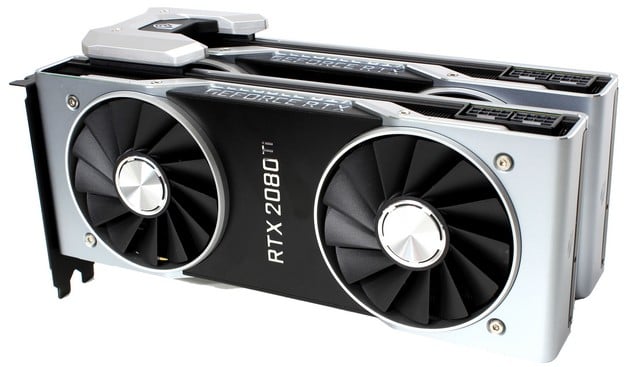NVIDIA GeForce RTX 2080 Ti NVLink SLI Scaling Explored
In this article, we are going to compare the performance of single and dual-card GeForce RTX 2080 Ti and GeForce GTX 1080 Ti configurations, to see if NVLink offers any sort of tangible benefits over the high-bandwidth traditional SLI connector available on Pascal-based cards in today's applications.
NVIDIA's version of SLI -- not to be confused with 3dfx's SLI -- was introduced back in 2004 as a way to link GPUs together to enhance performance by adding additional GPU resources to a system. SLI evolved over the years, however, with some graphics cards, allowing for two, three, or even four card configurations. Most recently though, pre-Turing, NVIDIA introduced HB or High Bandwidth SLI with its Pascal-based GeForce GRX 10 series cards. HB SLI utilizes both of the SLI fingers on compatible cards to allow more bandwidth between the two GPUs, but ultimately reduced the total number of cards that could be linked together.
With the introduction of the new Turing-based GeForce RTX 20 series, the SLI fingers present on previous-generation cards have been replaced by a next-generation interface dubbed NVLink. NVLink is not completely new, however. The second-generation NVLink technology utilized on GeForce RTX 20 series cards actually debuted on the Volta-based GV100 but it has been retooled for the consumer market. The NVLink bridge used with NVIDIA Quadro cards can cost upwards of $700 USD, so you can bet the $70 bridge designed for GeForce RTX 20 series cards isn't quite the same.
On the GeForce RTX 2080 Ti, NVLink allows for up to 100GB/s bidirectional bandwidth between the cards (the GeForce RTX 2080 offers 50GB/s). When fully utilized, NVLink will minimize inter-GPU traffic over the PCI Express interface and also allows the memory on each card to behave more as a single, shared resource. Traditional SLI was effectively a display interface, where the output from two GPUs was linked together and sent out to the display. To maintain compatibility, NVLink does the same thing, but it is also a high-bandwidth, low-latency memory interface, which opens up the possibility for new multi-GPU modes, not only for gaming but for scientific analysis and big data workloads as well.
Another new possibility with GeForce RTX NVLink is that SLI will no longer operate in the traditional master/slave mode. Applications will have to be developed that enable this functionality, but NVLink technically allows for more efficient utilization and sharing of GPU resources, without the need to designate a master GPU that affects the other's workload.
With that bit of background on SLI and NVLink out of the way, lets dig into an actual NVLink bridge, see what they're all about and what they can do...







